Persicaria lapathifolia, Curlytop Knotweed
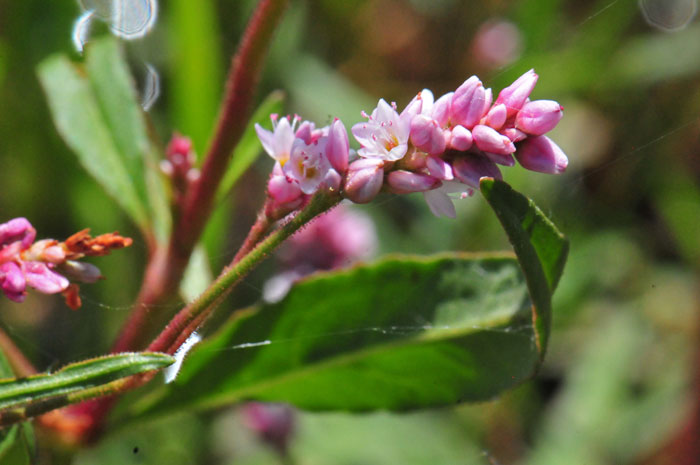
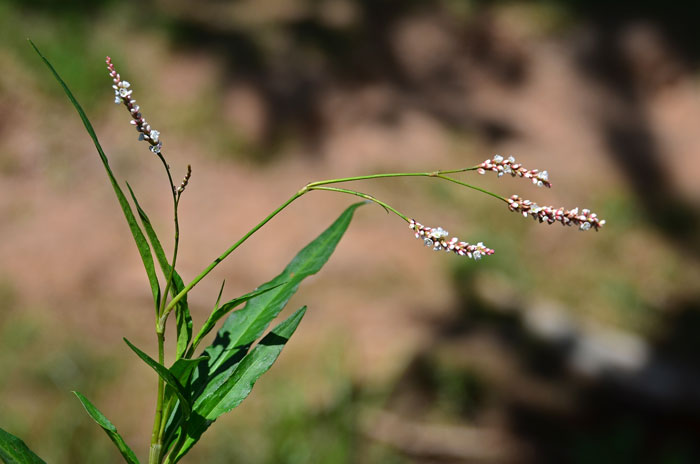
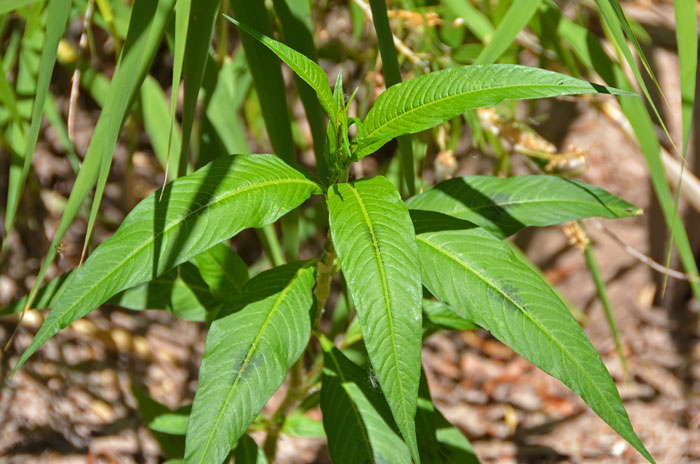
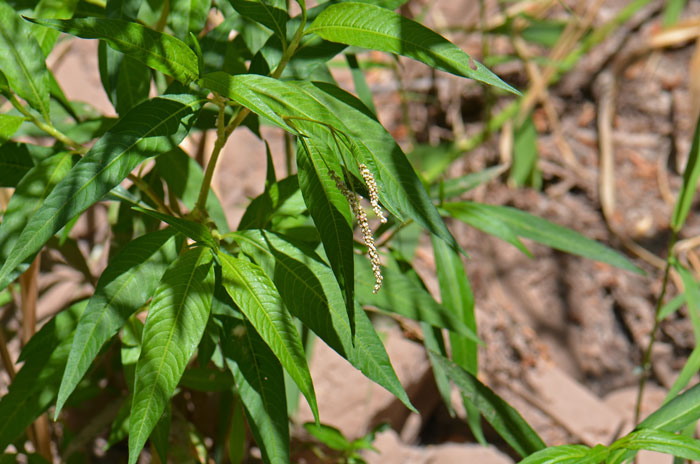

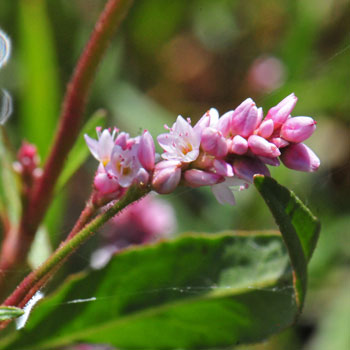
Scientific Name: Persicaria lapathifolia
Common Name: Curlytop Knotweed
Also Called: Curl-top Smartweed, Pale Persicaria, Pale Smartweed, Willow Weed
Family: Polygonaceae, Buckwheat Family
Synonyms: (Persicaria incarnata, Persicaria tomentosa, Polygonum incanum, Polygonum incarnatum, Polygonum lapathifolium, Polygonum linicola, Polygonum nodosum, Polygonum oneillii, Polygonum pensylvanicum subsp. oneillii, Polygonum scabrum, Polygonum tomentosum.)
Status: Native but may have been introduced from Europe.
Duration: Annual
Size: Up to 5 feet more or less.
Growth Form: Forb/herb; rhizomes, asexual to erect
Leaves: Green; up to 7 inches or more, with petiole; glabrous, lanceolate abaxial often hairy, ochrea brownish.
Flower Color: White, Pink, Purple; flowering branches arching or spike-like, drooping, glabrous; sepals and petals collectively referred to as a perianth; perianth greenish to pink.
Flowering Season: April to October; (April) July to November in California.
Elevation: 1,000 to 6,000 feet.
Habitat Preferences: Common in moist places, roadsides, floodplains, waste places, cultivated fields.
Recorded Range: Curlytop Knotweed is found throughout most of North America. It is considered native to the United States and invasive in Canada. This species occurs throughout most of Arizona with few or no records in Pinal, La Paz, Santa Cruz, and Yuma counties.
North America & US County Distribution Map for Persicaria lapathifolia.
U.S. Weed Information: In North America Persicaria lapathifolia is listed in: Weeds of Nebraska and the Great Plains and Weeds of the West. Plants included here may become weedy or invasive.
Invasive/Noxious Weed Information: No information available.
Wetland Indicator: In North America Persicaria lapathifolia has the following wetland designations: Alaska, FAC; Arid West, FACW; Atlantic and Gulf Coastal Plain, FACW; Eastern Mountains and Piedmont, FACW; Midwest, FACW; Northcentral & Northeast, FACW; Western Mountains, Valleys, and Coast, FACW; Great Plains, OBL.
FAC = Facultative, occur in wetlands and non-wetlands
FACW = Facultative Wetland, usually occur in wetlands, but may occur in non-wetlands
OBL = Obligate Wetland, almost always occur in wetlands
Threatened/Endangered Information: No information available.
Comments: Curlytop Knotweed is highly variable and the specific environmental conditions surrounding the plant are known to play a significant role in the form and structure (morphology) of the plant.
Persicaria lapathifolia, Curlytop Knotweed is or has been used for a variety of uses in North America including;
Cherokee Drug, Analgesic, Decoction mixed with meal and used as poultice for pain.
Cherokee Drug, Dermatological Aid, Crushed leaves rubbed on poison ivy.
Chippewa Drug, Gastrointestinal Aid, Simple or compound decoction of flowers and leaves taken for stomach pain.
Iroquois Drug, Anti-rheumatic (External), Decoction of plant used as a foot and leg soak for rheumatism.
See ethno-botanical uses at Native American Ethnobotany, University of Michigan, Dearborn (as Polygonum lapathifolium).

